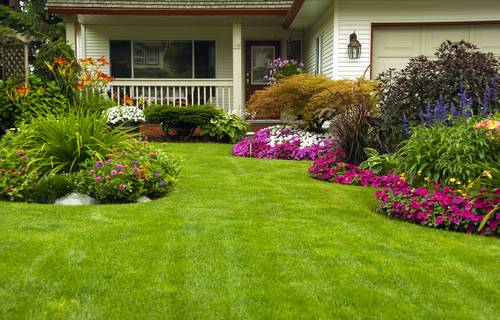Posts Tagged lawn care
How To Make Your Summer Landscape Design Stand Out
“The Poetry Of Earth Is Never Dead” – John Keats
Choosing plants for a Spring landscape can be pretty straightforward since many species thrive well this time of year, which is good, but if you’ve decided to switch things up and go for a summer landscape design instead, here’s how you do it.
When planning your summer landscape design you want to create the perfect mix of blooms that not only show resilience to heat but also make your landscape explode with life.
Well, here are a few insightful landscape design ideas that can help you to achieve the perfect landscape design this summer.
Use Heat-Tolerant Blooms in Landscape Designs to Beat the Heat

Various blooms can be damaged or destroyed in high temperatures so it is recommended that you use sun-loving plants that show exceptional resilience in heated conditions. Plants that can be planted in or before summer that thrive well in high temperatures can add a fresh and vibrant look to your landscape without compromise. Include heat-tolerant, summer-blooming plants like Zinnias, Verbenas, Latanas and Mealycup Sage in your garden.
Bring Your Landscape Design to Life with Lots of Color
Bring excitement and energy to your landscape design with bright and bold colors. Here are some great ideas you can use.
Opting to use species like Portulaca, a heavy blooming succulent, works well as a border in the landscape or “spiller” in your containers. Found in an array of colors such as white, orange and yellow while embraced by succulent foliage, this species is great for hot conditions and adds a bright, bold color combination to warm sun-kissed landscapes.
You can even go exotic by planting a little bit of every color or you can pair Portulaca with other sun-loving annuals or herbs such as pineapple sage, gomphrena or upright rosemary.
Add Variety and Contrasting Features with a Mixture of Color and Texture
You can pair plants together in order to create texture and to display color in any summer landscape design. You can even take things a step further by vamping up your foliage color with a bit of golden oregano mixed with varieties like ornamental peppers in yellow, orange or red.
Creating a kaleidoscope of colors contrasted by the velvety foliage of succulents adds an extraordinary texture and variety to your landscape and the best thing about them is they stay beautiful all summer long.
Make A Statement With Architectural & Modern Landscape Design Ideas
It’s not only the colorful, heat-loving blooms that make up the perfect summer landscape design but other important elements as well.
After planting your blooms and setting things in motion you want to put the finishing touches on your landscape design. Below are a few popular ideas that help you to put the icing on the cake by adding a contemporary flair to your surroundings while giving your landscape design that extra edge.
- Mulching – Provides additional color throughout the landscape and helps plants retain moisture.
- Fountains, bird-baths, garden furniture and stylish plant containers give a stylish effect that complements the entire landscape design.
- If none, adding certain hardscape features like, steps and walkways serves to accommodate traffic while adding extra appeal.
- Garden lights – Help to light walkways and give landscapes a certain ambiance at night.
Keep Landscape Designs and Regular Maintenance
Watering, pruning, deadheading and mulching are perfect ways to keep landscapes healthy and in superb shape. Supplementing landscapes with water up to twice per week or as needed is also very important – especially for containers and new color plantings. If you don’t have the time to water plants then perhaps installing an irrigation system can serve to supply water to landscapes in a timely manner without them being neglected or drying out.
Mowing, edging, raking and forking soil every now and then can also serve to keep landscapes clean and aerated while maintaining their appeal. If you need help establishing your summer landscape design, the experts here at DK Landscaping are here to help. Give us a call at (707) 280-3632 we install irrigation systems, design xeriscapes and hardscapes and offer landscape maintenance services.
For more information or to book an appointment you can visit our website at www.dklandscaping.com
Don’t sit there- Get started with your summer landscape today. Do you have a special design in mind?
Top Gardening Trends For 2018 – Create Your Santa Rosa Xeriscape
Santa Rosa Xeriscape – The Way to go!
Water conservation has become a big deal these days in Santa Rosa and in several other cities in California, since the state has been experiencing severe drought conditions in recent years. Here, authorities have been forced to implement specific regulations and water restrictions in order to facilitate the conservation of water throughout the state.

As a result of this many gardeners and landscapers in those areas have had to improvise with their gardening techniques and have been utilizing xeriscaping to keep their gardens in tip-top shape in harsh and limited conditions.
Xeriscaping can bring a whole new meaning to your gardening this year even if the area where you reside is not as dry as others. This technique can help you to save, spend less time watering plants and play your role in conserving water in your district.
FYI – Xeriscapes Make Things Easy For Gardeners Battling Drought
If you live in Santa Rosa or any other city in California that’s drought stricken, then you know that maintaining a healthy and well-nourished garden can be quite the task. Not only because of the harsh and conditions that can exist in some areas but also because of the many issues concerning water conservation.
This is certainly a discouragement for many gardeners as they may fear the worst for their gardens with water regulations being so strict, however there is hope. With your Santa Rosa xeriscape, all your gardening dreams can be made possible and you can still remain compliant with California’s Water Regulations. How?
Well, this particular type of landscaping is specially designed to reduce or eliminate the need for supplemental water to plants, making it easy for gardeners to maintain gardens or landscapes in the scarcity of water. Your Santa Rosa xeriscape does not have to be limited to a single look but can achieve almost any landscaping style conceivable. So whether you have a small garden or are responsible for maintaining a large landscape, using this concept won’t pose any issues with your gardening experience.
Furthermore for your Santa Rosa xeriscape, gardeners can choose from a host of attractive plants that not only show exceptional resilience to harsh conditions but also add variety and appeal to gardens.
Learn How You Can Achieve The Perfect Santa Rosa Xeriscape Following These Easy Steps
The fundamental element of xeriscape design is water conservation, making it the perfect solution for landscape designers who’re constantly searching for ways to reduce the amount water applied to their gardens and to maximize the use of natural precipitation.
Switching to xeriscaping from the more traditional way of landscaping is really quite easy and can be done by any gardener, however, whether you want to redesign an old landscape or create a fresh new, one using xeriscaping, there are a few basic principles that must be followed. These include:
- Planning
To kick off your Santa Rosa xeriscape project, planning is the first thing you should do, where you begin by constructing an aerial view of the site using graph paper, and then marking down North, South, East, and West.
Next, any limiting features such as trees, fences, walkways or structures should be included in plans, noting areas of full sun and full shade to help you to establish areas with different water requirements. You’ll also want to group plants with similar watering needs for most efficient water use.
It is also suggested that gardeners plot areas for seating, walkways, visual barriers, dining or play into plans; carefully constructing a section where larger plantings, such as shrubs and trees can be positioned to provide natural heating and cooling opportunities for adjacent buildings.
Lastly, study the natural contours and drainage patterns of the site to better understand the best or worst location for plants. These contours can be easily developed into terraces, which help to add visual interest and reduce soil loss and erosion.
- Soil Improvement
The next step to creating the perfect Santa Rosa xeriscape would be to improve soil quality on the site. In water-scarce landscapes having the ideal soil conditions does two things: it drains quickly and retains water at the same time. This is achieved by increasing the amount of organic material in your soil and keeping it well aerated.
All you have to do is to purchase some compost from your garden center to help increase the organic matter in your soil, though if you intend to use succulents and cacti in your Santa Rosa xeriscape you may want to work at achieving a leaner soil.
Adding bone meal and rock phosphate to the soil is also another way to boost soil volume and help to improve soil quality, however this is usually done with soils testing a high pH (too alkaline) and low in phosphorus.
- Create Limited Turf Areas
Next, you will need to reduce the size of turf areas as much as possible while retaining an area for open space, functionality and visual appeal. If you intend to plant new turf or reseed an existing lawn, it may be sensible to purchase water-saving species plants adapted to your area from your garden center. This brings us to our next step.
- Use Appropriate Plants
For gardeners to achieve the best results with their Santa Rosa xeriscape, they should select drought-resistant plants native to their region. The plants selected should have leaves which are small, thick, glossy, silver-grey or fuzzy – all characteristics which help them save water. It is also important to choose plants for their ultimate size which will reduce the need for pruning maintenance, especially in hot and dry areas.
Keep in mind to place plants along North and East-facing slopes and walls, that like more moisture but most importantly, it’s best not to mix plants with high and low-watering needs in the same planting area.
- Mulch
Most seasoned gardeners already know that mulching is a great way to promote healthy blooms and landscapes as it helps to retain moisture in the soil, prevent erosion and block troublesome weeds.
With xeriscaping, mulching is also another important aspect of the process and serves basically the same purpose that it would in any other garden. Mulch, such as leaves, wood chips, pine needles or bark should be used and placed to dress the top of soil on occasion, however, for the best results make sure that mulch is at least 3 inches thick and no areas of bare soil are left out.
- Installing Low Drip Irrigation
One of the main purposes of creating a xeriscape is to conserve water and to better facilitate gardens situated in inhospitable areas. Finding efficient ways in which plants can receive the water they need without overwatering can be a bit tricky but by installing a low drip or low volume irrigation system you can certainly pull it off.
This method offers the easiest and most efficient way to supply water just because it delivers water directly to the base of the plant. It also reduces moisture loss, pooling, erosion and is generally the best option when watering plants less frequently.
- Keep Landscapes Well Maintained
Low-maintenance is one of the many benefits of xeriscape, in fact it’s how it got its name; Where the word ‘zero-scaping’, was later substituted with ‘xeriscape’, referring to a landscape that requires zero maintenance.
Although preventing weed growth may require some attention there’s not much for gardeners to maintain when they decide to utilize this form of landscaping. Nevertheless redressing mulch on occasion and cutting turf areas moderately to allow shade for the roots can all be done from time to time to keep your Santa Rosa Xeriscape fresh and healthy.
Get Help Constructing Your Santa Rosa Xeriscape From Scratch – Look Us Up At DK Landscaping Inc. – We’re The Best At Xeriscapes
Following tips can be one thing but when undertaking large gardening projects such as these most people will require an extra hand. Don’t get injured working without the necessary tools or spend long periods of time trying to get projects completed, call the professionals at DK Landscaping.
Producing some of the best Santa Rosa xeriscapes, we strive to incorporate creativity, professionalism and hard work into one service at a fair and affordable price.
We can help you to plan and develop the perfect xeriscape, whether it be residential or commercial. With our xeriscaping services, we offer clients assistance by helping them to choose the right plants, slope sites, mulch areas and install irrigation, this way they can avoid the hassle and save money.
Contact us today at (707) 280-3632 to get started creating your Santa Rosa xeriscape or visit our website at dklandscaping.com for more information on our services.
Useful Gardening Tips That Promote Healthy Landscapes
As a gardener or landscaper maintaining beautiful surroundings and healthy plants is certainly an important priority and even though this may sometimes be challenging it is necessary if landscapes are to remain healthy and attractive. You want your friends and family to have fun in a garden that is full of life and energy and good maintenance is the key. There are several useful tips that gardeners can apply in effort to promote healthy landscapes and gardens.
Excellent Soil Quality is Vital in Maintaining Healthy Landscapes

Good soil quality is extremely important if plants and trees are to grow healthy and to their full potential. If you discover that your plants, trees or flowers are not thriving this may be due to poor soil quality however one approach that has proven to improve and maintain the quality of soil is the use of fertilizer.
Fertilizer can come in several forms and is an excellent way to enrich soil and promote plant growth. One of the most common forms of fertilizer used throughout gardens and landscapes is organic fertilizer.
Essentially organic fertilizer consist of naturally bio-degradable materials mainly in the form of animal manure but can also be other natural ingredients. It is great for gardens and crops as it not only restores soil quality but improves the long term health of soil promoting healthy landscapes overall..
Mulching Promotes Healthy Landscapes and Gardens
In looking for great ways to promote healthy landscapes and gardens another very useful tip gardeners can utilize is the application of mulch to garden beds and other landscape areas. Generally mulch is used to eliminate weeds, protect and stabilize plants and trees as well as to help soil retain moisture.
Mainly consisting of several, different, materials including chopped leaves, straw, grass clippings, wood chips,sawdust, shredded bark, gravel or stone mulch can be used in vegetable gardens, flower beds, plant pots, around trees, walkway areas, hedges and more.
Among many common gardening techniques the use of mulch has been found to be an easy, environmentally friendly way to promote healthy landscapes and gardens.
Proficient Irrigation Systems Help Promote Healthy Landscapes
In order for gardens or landscapes to remain lush and healthy having an adequate water supply is very important. So a great way to ensure that plants are properly supplied with water is by installing an irrigation system that provides a precise and timely supply of water to landscapes and gardens.
An irrigation system basically obtains water from a source and distributes it equally and uniformly to specific areas throughout gardens. Different kinds of irrigation used include high or micro flow irrigation, in-ground irrigation and automatic irrigation systems.
Over time irrigation methods have improved to better manage different types of gardening done so depending on what type of gardening you do installing the appropriate irrigation system is the best way to ensure gardens and landscapes receive the water they require.
Need Help With Your Landscaping?
Here at Dk Landscaping Inc. we aim to provide the highest quality landscaping and gardening services to clients. Our dedicated team works with clients to manage any type of gardening or landscape services you may need. Whether it be mulching, pruning, irrigation or even planting with affordable rates and great service we’d be happy to come in and assist. Contact us for more information.
Effective Garden Tips Part 1 – Use Mulch For A Healthy Garden
In an effort to keep gardens healthy and vibrant gardeners utilize a variety of tips and techniques that serve to nurture, protect and maintain their plants and vegetables. Among these techniques the use of mulch has been found to be one of the easiest and more common methods used to promote a healthy and consistent environment in gardens.
Generally mulching can be utilized in several different areas including vegetable gardens, flower beds, plant pots and walkway areas however it is mainly used to help in the elimination of annoying weeds and helps soil to retain moisture. Additionally it also helps to protect and stabilize plants, trees and crops.
Different Types Of Mulch
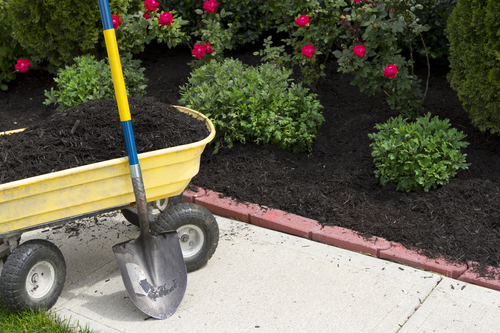
Basically there are two kinds of mulch that can be used in gardens and these are organic or inorganic mulch. Usually organic mulches consist of several different materials including chopped leaves, straw, grass clippings, wood chips, sawdust and shredded bark while inorganic mulches are mainly comprised of gravel, stones, black plastic, and geotextiles.
Nevertheless regardless of the type applied to a garden its use is mainly the same which is to discourage weed growth and improve soil quality however organic mulches gradually improve soil as they decompose while inorganic mulches don’t.
How To Mulch
Gardeners mulch gardens for a variety of reasons but depending on the reason there are certain tips that should be applied if this technique is to be done properly and is to work effectively.
Mulch To Be Rid Of Weeds
For instance if mulch is being used to eliminate weeds there are two important tips gardeners should remember if it is to be executed accurately. The first tip would be to place the it on soil that has already been weeded and the second would be to lay it down on soil thick enough to discourage new weeds from reappearing.
Normally the thickness of mulch should range from around 4 – 6 inches when applied however in areas where weed growth is not as common a layer of mulch measuring 2-3 inches should be enough to do the trick.
Mulching Reduces The Need To Water Gardens
As a great way to keep soil cool and help plants retain moisture in dry conditions gardeners can again apply mulch to their gardens. It also reduces the need to constantly water gardens and what’s more is that in cold conditions mulching also provides considerable protection to prevent the freezing and thawing of the soil as the gradual decomposition of materials only generate minimal heat.
Additional Tips To Consider
When using organic mulch it is important to remember that they carry a low nitrogen content therefore gardeners should first fertilize soil with a high-nitrogen product such as blood meal or fish meal to increase nitrogen levels in the soil before applying mulch.
Gardeners should also remember to keep mulch about an inch away from crowns and stems to prevent them from becoming choked or damaged and should also be careful not to allow wet mulch to rests against the stems of flowers and vegetables as it can cause them to rot.
So protect and maintain the ideal environment in gardens by considering mulching it will save you time and promote a healthy environment for your plants or vegetables.
Need Help In Your Garden?
If you don’t know what to do or need help mulching your garden don’t hesitate to give us a call at DK Landscaping Inc. at: (707) 217-6508 we’d be happy to come and give you a hand. You can also check out our website: dklandscaping.com to have a look at the services we offer.
How Mulch Can Be Applied To Your Garden v1
One very useful and effective approach that gardeners can adopt to promote a healthy garden is mulching. This measure can be utilized in several areas including vegetable gardens and flower beds. The use of mulch can help to eliminate the presence of annoying weeds and helps soil to retain its moisture. Spend less time plucking up weeds, watering gardens and fighting pests when you use this technique.
Mulch For The Perfect Garden
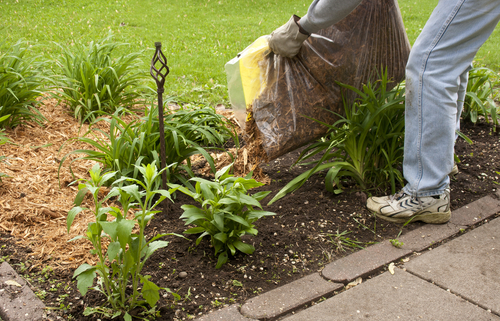
When mulching gardens there are two basic types of mulch that can be used and these are organic or inorganic. Organic mulches usually consist of several different,\ materials including chopped leaves, straw, grass clippings, wood chips,sawdust and shredded bark and inorganic mulches are mainly comprised of gravel, stones, black plastic, and geotextiles. Both types of mulch can be used to discourage weed growth and improve soil quality but organic mulches gradually improve soil as they decomposes while inorganic mulches don’t.
If people are applying mulch to combat weeds there are two important tips they should consider if it is to be done properly and effectively. The first would be to lay down mulch on soil that is already weeded and the second would be to lay it down thick enough to discourage new weeds from reappearing. The ideal thickness of mulch should range from around 4- 6 inches when laid even though a 2- 3 inch layer normally suffices in shady areas where weed growth is not as prevalent as it is in full sun.
Mulching is also an easy way to keep soil cool and moist in dry conditions and reduces the need to constantly water gardens. It provides protection to plants in harsh cold conditions preventing the freezing and thawing of the soil as the gradual decomposition of materials help to generate minimal heat.
Organic mulch has low nitrogen content and should fertilize soil first with a high-nitrogen product such as blood meal or fish meal to boost nitrogen levels in the soil before applying mulch. Another important thing that gardeners should take care to remember is to keep mulch about an inch away from crowns and stems. This is because wet mulch that rests against the stems of flowers and vegetables can cause them to rot. So be sure that mulch is at the appropriate distance to prevent this from occurring.
To protect and maintain the ideal conditions gardeners should definitely consider mulching as an option it is easy to apply, saves time and encourages a healthy, nurtured, environment throughout any garden. Contact us for more information.
Spring Landscaping Ideas For The Perfect Garden
Landscaping during spring can give you a luxurious and glamorous looking garden. Spring is classified as one of four temporal seasons experienced here on our planet which occurs just after the winter and just before the summer. When most people refer to spring or ‘springtime’, to them it becomes synonymous with ideas of rebirth, rejuvenation, renewal, resurrection and regrowth.
Nevertheless due to the cold conditions brought on by the winter season it is highly likely that most plants, trees and shrubs will suffer substantial damage during the early part of the year. If you have a garden in and around your surrounding property protecting your plants from any damage or destruction should always be a major concern.
Landscaping Your Property During Spring
Since the springtime is seen as a time of rebirth and regrowth there are some additional tips that gardeners can employ to ensure that they maintain a safe and nurturing environment throughout their gardens.
Due to the harsh, cold, conditions of winter debris inevitably accumulates in grass and on lawns. Since lawns require no more than ½ an inch of buildup gardeners should rake away any excess debris from their grass or lawns. This also helps to control thatch on the lawn and offers an opportunity to look for matted areas. Raking will also allow the lawn a chance to breathe again.
Over time lawns can become compacted especially with a lot of traffic or excess debris so to help with this it is highly recommended that gardeners aerate lawns in order to avoid this. If you are not sure how to aerate your lawn you can always contact a professional landscaping service to come and assist with this.
Apart from some lawns having excess debris some can be found to have a lot of patches and bare areas. Overseeding is one method gardeners can utilize and refers to the applications of seeds to fill bare or patchy spaces in lawns . Although this alternative is generally recommended for the fall season it can be done in the spring if absolutely necessary.
If you have a sprinkler system the springtime would be the ideal time to inspect it for any damages and if any to perform repairs. However if all is well and no issues are detected this would also be the perfect time to have your system reactivated.
The spring is also a good time to apply some pre-emergent weed control to plants. This serves significantly control weeds in gardens as well as to act as a barrier against future weed seedlings. Gardeners should always keep in mind that this should be done before applying any organic fertilizers and to ensure effective weed control applications should be done on a continued basis in and through the summer.
Mulching is another effective system that gardeners ought to practice during spring as it offers several benefits to existing or emerging flowers, plants and trees in gardens. Placing mulch in flowerbeds and around plants and trees helps them retain moisture during the early spring months. It also helps to reduce the temperature of plant roots and insulates them in event of an unexpected freeze during the spring.
It is only natural that all gardeners, landscapers and farmers alike all want their gardens or crops to thrive and be protected so by utilizing a network of useful informative and effective tips available online or by hiring professional services those goals can ultimately be achieved. Contact us for more information.
Winter Plants – Part 1
Nature provides numerous varieties of winter plants that flourish in cold temperatures. There are winter plants that will flourish even in snowfall and there are others that can mirror their vibrant colors from the icicles hanging from your home.
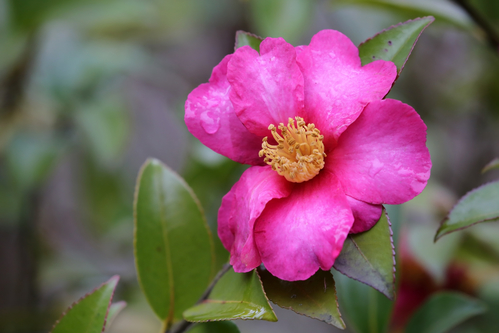
Winter Plants For A Breath Taking Scenery
One of the well-liked winter plants is the Camellia. This evergreen flourish from fall to early spring. With its brightly colored rose like flowers this plant provides a breathtaking difference to a sombre winter scenery. Camellia should be sowed in an area that have some sun but not too much
The winter-berry which is related to the holly and loses its leaves in fall is a great plant to have this time of year. You and your loved ones can enjoy the vibrant red berries that come into their own. The berries attract the birds during this time which is a sight to see and the birds will be happy for your blessings as well. You must plant the seeds during the fall in a small frame, then you can transplant them to fertile damp soil in the spring. However it is a slow growing winter plant, with its germination taking about 2 to 3 years.
Paper Maple has ringlets of copper colored bark flaking off all over and this constructs a pleasurable image both on the plant and while the leaves lay on the ground in all their splendor. During fall the green leaves change into a fascinating cinnamon shade and the plant grows in sunlight perfectly.
Red Twig Dogwood is an old-time golden boy as the color of the plant is sustained all year round. The boldness of the plant’s color relies on the sunlight it obtains. This is another incredible addition to consider in your garden during winter.
Firethorn is lasting and it has an appealing view all year. It has little bunches of glistening white flowers in spring and vibrant shiny green leaves the rest of the year. The little pea like berries can be either orange or yellow in color and these can survive until long after fall is over. The seeds should be sowed in the fall in a cold frame then transplanted to properly drained fertile earth in the spring.
If you want the best in lawn maintenance and advice contact us as DK landscaping. Our team of experts will help you give your garden the nutrients and the proper care it needs to survive and remain lush.
Winter Services for Property and Landscape Maintenance
The cold temperatures and dry air can prove to be quite the burden on your lawn and landscaping. Property owners can preserve the integrity of their lawn and landscaping by reaching out to our lawn and landscape maintenance professionals for expert treatment. Ally with DK Landscaping and we will make sure your property maintains its beauty throughout the winter, spring, summer and fall.
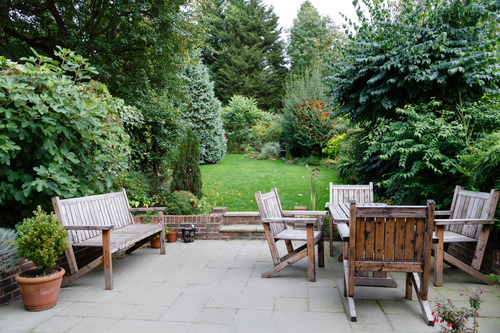
Winter Lawns and Landscaping Maintenance
Your front and back lawns are not a lost cause during the winter months. Though the frigid temperatures will take a toll on all forms of life, it is certainly possible to maintain a lovely lawn, shrubs, flowers, trees and other greenery during the coldest portion of the year.
DK Landscaping knows exactly how to treat lawns during the winter. We make use of a unique winter fertilizer that keeps lawns looking fantastic even when the temperatures dip down toward the freezing mark. Our special fertilizer enhances grass so it does not require an abundance of water. It also stimulate robust root development that ultimately preserves the integrity of your grass across the years to come. This fertilizer even bolsters your lawn’s ability to combat disease and withstand heavy foot traffic.
Ally with DK Landscaping for winter lawn and landscaping maintenance and you will notice a considerable difference in your property’s beauty. We know exactly which trees, shrubs and flowers should be pruned during the winter months. Furthermore, our team understands the extent to which each type of shrub and flower should be pruned.
As an example, we prune certain roses back by upwards of 80 percent during the winter months. Certain types of grass such as ornamental grasses require 90 percent pruning during the coldest months of the year. This is the type of attention to detail that separates your lawn’s health and beauty from the pack. Put your faith in DK Landscaping to sweat the small stuff and you will enjoy the benefits in the form of glorious lawn and landscaping that holds its beauty far into the future.
Water Preservation
The winter months can be brutally dry. You might be tempted to water your grass, trees, flowers and shrubs quite frequently during this time of the year. Yet you don’t want to run up an expensive water bill or spend your limited free time outdoors in the bone chilling cold with a hose in your hands! Your best course of action is to turn to the irrigation experts at DK Landscaping.
We know all the best methods to disperse water in a highly efficient manner. We also perform water saving landscape design known as “xeriscape“. Homeowners and commercial property owners can both benefit from the efficient distribution of water across lawn and landscaping. Our goal is to conserve water, save you plenty of money and keep your lawn in tip-top shape.
In addition to water saving landscape design techniques, we also make use of native plants acclimated to the dry air, runoff prevention methods, drip irrigation, MP rotators and smart evapotranspiration timers. The end result is a stunning lawn and landscaping that requires substantially less water than previously needed.
Ask any of our current or former customers about our water conservation design methods and equipment and they will testify to the legitimacy of these strategies.
Let our landscape maintenance experts take a look at your property and we’ll start brainstorming ways to boost its aesthetic. Whether you are looking for a beautifully green lawn or elegant landscaping, DK Landscaping can make it happen. Reach out to us to schedule an initial consultation.
How to Grow Boxwood Shrubs
Boxwood is an evergreen plant that grows in small, dense hedges. It doesn’t flower noticeably, but its rich green color makes it good for foliage cover. They work well for borders or near entryways. However, it’s a slow-growing plant, so don’t expect it to be impressive overnight.
A Few Boxwood Facts
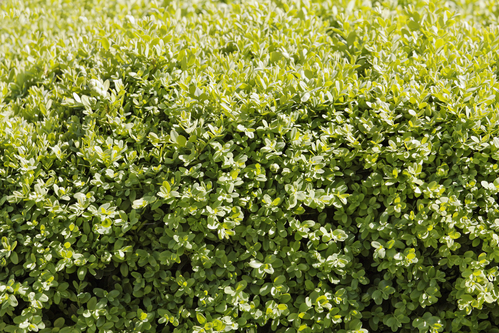
As with all plants, be sure you’re placing your boxwood shrubs well. Boxwood typically does best in partial or full sun, so don’t plant it on the shady side of a house. Boxwood shrubs prefer well-drained soil, although it’s not very picky about pH. In very hot climates, try to plant your shrubs so they’ll receive some shade during the heat of the day, and do your best to water them semi-regularly so they don’t wilt. Try to remember your climate will impact the health of your boxwood.
Boxwood is generally hardy, but it has a few pests to watch out for. The most notable is the boxwood leaf miner, which causes the leaves to turn yellow. You can spray the leaves with insecticide to kill the plant, or try for an organic option such as neem oil.
You may also notice phytophthora root rot, a fungal infection. The fungus kills the roots, so the plant has a harder time taking in moisture and nutrients, and eventually begins to die back. To prevent this, make sure you’re not overwatering your boxwood shrubs, and ensure the soil is draining well.
Winter bronzing is a phenomenon where a boxwood’s leaves turn orange in the cold. This isn’t fatal to the plant, but many gardeners find it unpleasant to have. Winter bronzing is often caused by wind exposure.
To avoid winter bronzing, try to plant your boxwood shrubs such that they’re sheltered from freezing winter winds. If your ground isn’t frozen, give your shrubs a deep watering, especially if you live in a region with dry winters. You may also consider using a slow-release fertilizer in spring and fall. If your boxwoods are still bronzing, try spraying the leaves with an anti-desiccant, to keep their moisture in.
Though it takes dedication to reach its full potential, boxwood is a beautiful foliage plant that’s a staple of many gardens. If you plan to install boxwood shrubs around your home, get in touch with us and we’ll walk you through the process. Contact us at DK Landscaping for more gardening tips and advice.
About Watering Lawn After Mowing
Engaging in watering lawn? As the weather heats up, more people will be venturing out into their yards to mow, plant, trim, and generally get things spruced up. Mowing the lawn becomes an almost constant chore from the time the dandelions pop up in the spring until the leaves fall in the autumn. Whether you choose to mow your own lawn or hire experienced professionals, you may have some questions about watering your lawn after mowing.
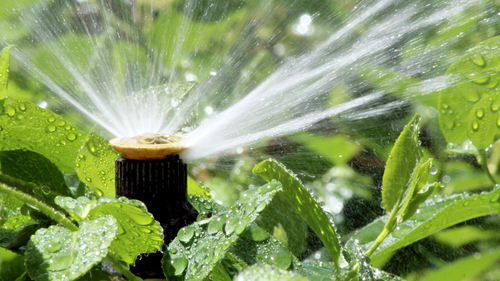
Setting a Schedule for Mowing
While mowing and watering are two separate chores which should both be scheduled, it’s important to leave room for flexibility for the days of drought and when it pours. The lawn needs mowing when the grass reaches a certain height and watering when the grass is dry. Those two events may or may not occur at the same time. Establishing a schedule to address these needs will help you make sure you aren’t wasting water or time. You should mow when grass reaches a height of about 3 to 4.5 inches. When it’s tall enough, trim it to about 2 to 3 inches. Depending on the season and type of grass, you may need to schedule mowing as often as every 5 days.
Setting a Schedule for Watering
Schedule your watering so that grass gets about 1.5 inches of water per week during the growing season. Time of day is also important to consider. Morning is an ideal time to water because it allows the grass to soak up the water before the heat of the day. Watering in the middle of the day wastes water because the sun speeds evaporation. In addition, watering too late in the day leaves insufficient time for the water to soak in before it cools off at night, potentially leading to fungal growth or other disease.
Knowing When to Water by the Color of Your Grass
Determining that grass needs water is a little tricky, but there are some things to look for. Grass that fades from bright green to a dull, bluish gray is probably thirsty. Also, look for signs of wilting, such as curling grass blades. Another trick is to look for footprints in the grass after you’ve been walking in the yard. Hydrated grass will spring back more than dried grass so, if you can see that you’ve left a trail, it’s time to water. One foolproof way to know if your grass needs a drink is to use a simple moisture meter, available at many garden stores. Or, utilize a rain gauge so that you know how much natural precipitation has fallen during the week.
A Pristine Lawn Takes Time and Attention
So, should you water after mowing? The simple answer is yes, but only if your grass needs the moisture. If you’ve had a rainy week and the grass isn’t showing footprints or other signs of dehydration, you can probably put off watering for a bit longer. If your lawn does need to be mowed and watered, make sure you schedule it for early in the day to avoid moisture evaporation and problems with disease. Don’t water your grass before mowing. Wet grass tends to clump together on the lawn which could suffocate the grass underneath or promote fungal growth. Also, it could clog up your mower.
Mowing is an essential aspect of home maintenance. A freshly-mowed lawn looks great, feels wonderful on bare feet, and helps keep invasive weeds in control. To handle all of your mowing needs, get in touch with the professionals at DK Landscaping today. You can trust us to keep your yard looking great for all seasons.


